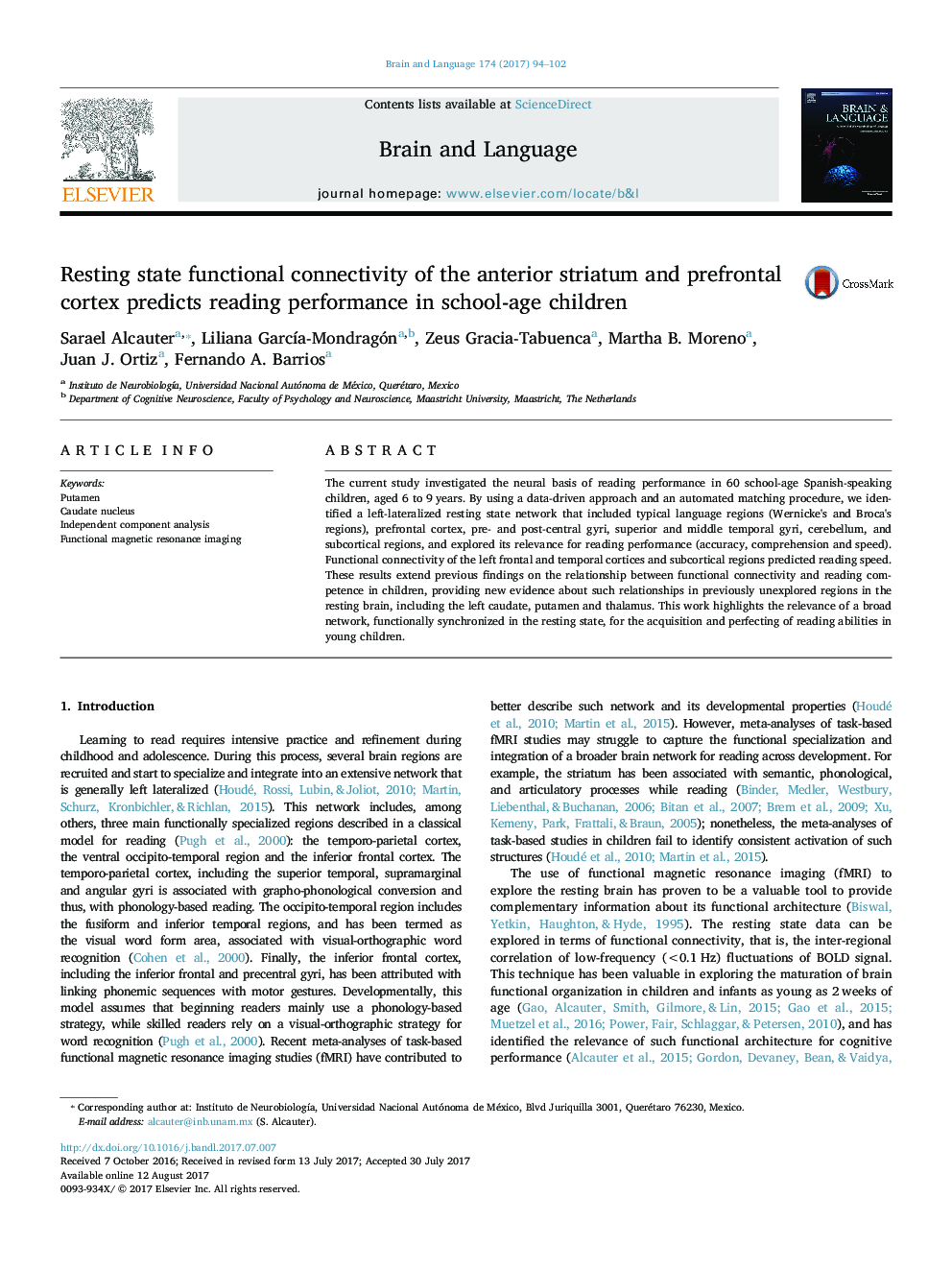| Article ID | Journal | Published Year | Pages | File Type |
|---|---|---|---|---|
| 5041239 | Brain and Language | 2017 | 9 Pages |
â¢A resting-state language network was identified in children aged 6 to 9 years.â¢Connectivity of the anterior striatum within this network predicted reading speed.â¢We provide new information about resting-state connectivity and reading abilities.
The current study investigated the neural basis of reading performance in 60 school-age Spanish-speaking children, aged 6 to 9Â years. By using a data-driven approach and an automated matching procedure, we identified a left-lateralized resting state network that included typical language regions (Wernicke's and Broca's regions), prefrontal cortex, pre- and post-central gyri, superior and middle temporal gyri, cerebellum, and subcortical regions, and explored its relevance for reading performance (accuracy, comprehension and speed). Functional connectivity of the left frontal and temporal cortices and subcortical regions predicted reading speed. These results extend previous findings on the relationship between functional connectivity and reading competence in children, providing new evidence about such relationships in previously unexplored regions in the resting brain, including the left caudate, putamen and thalamus. This work highlights the relevance of a broad network, functionally synchronized in the resting state, for the acquisition and perfecting of reading abilities in young children.
